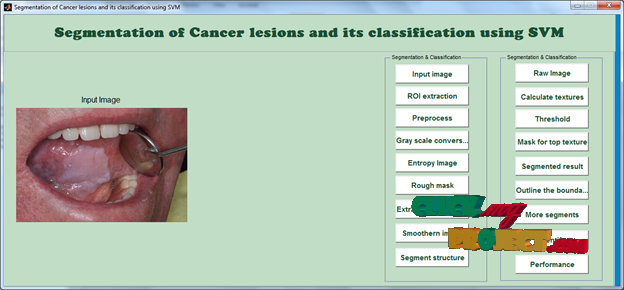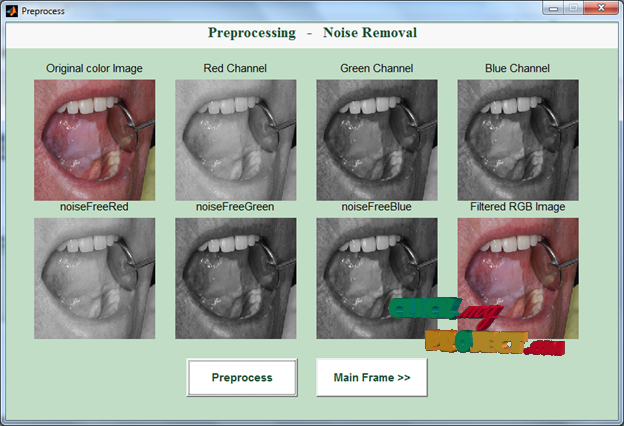Texture Analysis Based Segmentation and Classification of Oral Cancer Lesions in Color Images Using ANN
Our Price
₹3,000.00
10000 in stock
Support
Ready to Ship
Description
A co-occurrence matrix or co-occurrence distribution is a matrix or distribution that is defined over an image to be the distribution of co-occurring values at a given offset. Mathematically, a co-occurrence matrix C is defined over an n × m image I. For a texture image with gray levels, it is denoted and provides a statistical representation by the estimation of a bivariate conditional probability density function of the image distribution values. It is calculated according to the pioneering run length matrix principle (RLM): the value of the matrix is equal to the number of zones of size and of gray level The resulting matrix has a fixed number of lines equal to N, the number of gray levels, and a dynamic number of columns, determined by the size of the largest zone as well as the size quantization. The more homogeneous the texture, the wider and flatter the matrix. GLSZM does not required computation in several directions, contrary to RLM and co-occurrence matrix (COM). However, it has been empirically proved that the degree of gray level quantization still has an important impact on the texture classification performance. For a general application it is usually required to test several gray-level quantization’s to find the optimal one with respect to a training dataset. Training a neural network model essentially means selecting one model from the set of allowed models (or, in a Bayesian framework, determining a distribution over the set of allowed models) that minimizes the cost criterion. There are numerous algorithms available for training neural network models; most of them can be viewed as a straightforward application of optimization theory and statistical estimation. Most of the algorithms used in training artificial neural networks employ some form of gradient descent. This is done by simply taking the derivative of the cost function with respect to the network parameters and then changing those parameters in a gradient-related direction. In this work we apply Texture extraction methods based segmentation for the oral cancer lesions with their corresponding work related to the segmentation process. During segmentation we will follow the steps of entropy, binary conversion and segmentation of image in two levels as foreground and background. This proposed methodology provides better segmentation and classification results by our proposed SVM classification methodology.




